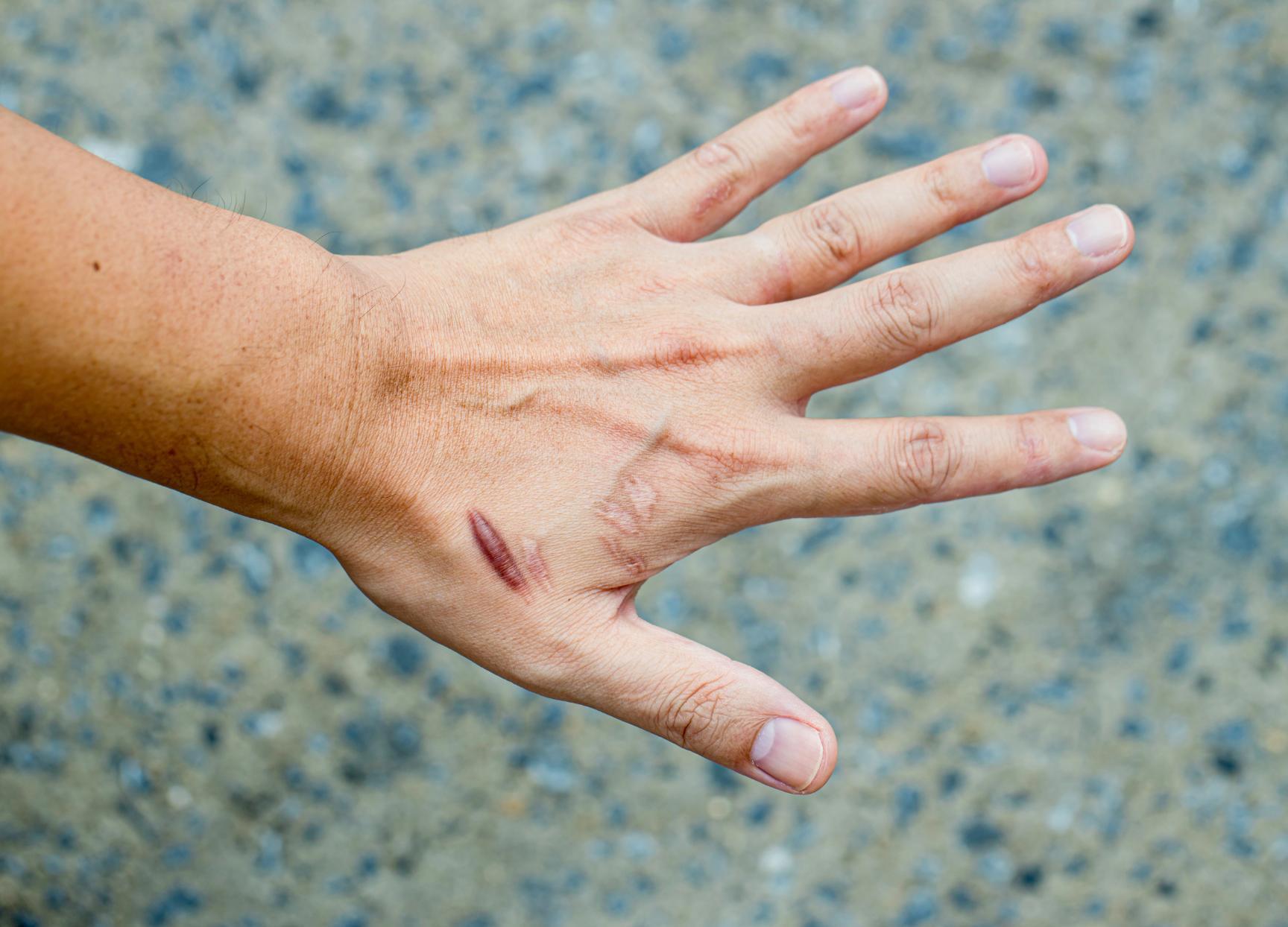Keloid Scars
Keloid scars are a type of scar that is raised and thick. It can develop anywhere on the body where the skin has been damaged and can make movement difficult in some cases.

What are keloid scars?
A keloid scar is a thick, raised scar that develops on the surface of the skin. They develop over time after the skin has healed and the body has repaired a damaged or injured area of the skin. Unlike a normal scar, keloid scars grow further than just the injured area, and depending on their size and location can make certain movements difficult.
Anyone can develop a keloid scar, but people with dark skin, as well as people with red hair, are more likely to be affected by it. Although keloid scars aren’t harmful to physical health, their appearance can cause emotional distress. While keloids cannot be prevented, there are several effective treatments available that can help to reduce the appearance of them.
What are the symptoms of keloid scars?
A keloid scar can develop on any part of the body, but they’re most common on the chest, shoulders, chin, neck, lower legs and ears.
In most cases, a keloid scar will:
Be raised, hard, smooth, hairless and shiny
Be pink, red, purple or brown, or darker than the surrounding skin
Grow beyond the area of the original injury
Have a varied texture of soft, firm and rubbery
While a keloid scar is growing, it may feel itchy or painful, and depending on its location and size, it can also be uncomfortable or cause difficulty moving.
What causes keloid scars?
Keloid scars usually develop over several months, or even years, after the skin has sustained an injury, such as a cut or burn. It’s thought that this happens when the body produces too much collagen in your skin so a scar overdevelops and grows more than it should.
Keloid scars can form as a result of any type of trauma to the skin such as a cut, burn, surgery incision, acne, piercings or tattoos.
Your risk of developing a keloid scar is higher if you:
Are of South Asian, Chinese, African Caribbean or Black African descent
Are under 30 years old
Are pregnant
Have a personal or family history of keloid scars
How are keloid scars diagnosed?
At OneWelbeck, our specialist dermatologists will be able to diagnose if you have a keloid scar by examining the affected area of your skin and taking a medical history. They will also ask you some questions such as when the initial injury took place, how it was treated, and how you feel the scar affects you.
What are the treatment options for keloid scars?
Early treatment is the key to minimising the growth of a keloid scar, but treatment can also be effective at a later stage of keloid growth to improve its appearance, restore mobility and reduce irritation. It’s important to remember that a keloid scar cannot be gotten rid of completely and that it can recur after treatment.
Treatment options for keloid scars include:
Topical or injected corticosteroids - to ease the itchiness of the scar and to reduce the thickness of the skin to flatten the scar
Silicone dressings or gels - to help flatten the keloid and help prevent it from returning after another treatment such as keloid surgery
Cryotherapy - freezing the skin may reduce the size of a keloid and can also make steroid injections more effective
Laser therapy - may help to reduce itching, flatten the scar and reduce any discolouration
Surgery - a keloid scar may be surgically removed if other therapies have not been effective, but most keloid scars will return with this method
